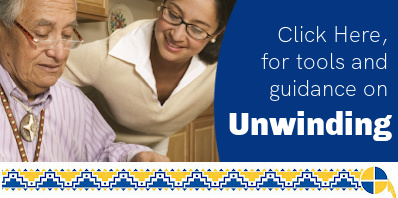
LTSS Overview


This section provides an overview of the main concepts behind LTSS. Use this information to learn the basics, or as talking points to start the conversation about LTSS with others in your community.
What Are Long-Term Services and Supports (LTSS)?
- Care provided in the home, in community-based settings, or in facilities, such as nursing homes
- Care for older adults and people with disabilities who need support because of age; physical, cognitive, developmental, or chronic health conditions; or other functional limitations that restrict their abilities to care for themselves
- A wide range of services to help people live more independently by assisting with personal and healthcare needs and activities of daily living, such as
- Eating
- Taking baths
- Managing medication
- Grooming
- Walking
- Getting up and down from a seated position
- Using the toilet
- Cooking
- Driving
- Getting dressed
- Managing money
Why Are LTSS Programs Important?
Tribal Needs Are Growing
- By 2020, the number of older American Indians and Alaska Natives (AI/ANs) is expected to be more than double what it was in 2016.1
- Elders are living longer, but with long life can come more chronic illness and disability. AI/ANs experience high rates of diabetes, cancer, heart disease, and other conditions. AI/ANs at age 18 have the highest disability rate in the country (29.9% compared to the general population rate of 19.9%). 2
LTSS Programs Improve Lives
- Community-based LTSS programs help older adults and people with disabilities live at home or in local settings. The result: better health and maximum independence.
- Community-based LTSS also provide help and encouragement to family members caring for older adults and people with disabilities. These supports can include training, counseling, support groups, and respite care.
Tribal Programs Meet Community Needs
- Most AI/AN families want to care for their loved ones in ways that preserve their dignity, honor cultural traditions, and allow them to keep living in their homes and remain a part of their communities as much as possible.
- Tribes that create their own programs can provide community-based LTSS in ways that reflect their unique needs, culture, values, and community expectations.
Funding Can Be Found
By being innovative and combining resources from many programs, most tribes can find a way to fund the programs they need.
- Medicaid and, to a lesser extent, Medicare and the Indian Health Service, cover some LTSS. Other possible funding sources include Title VI of the Older Americans Act, tribal revenue, other federal programs, state programs, county programs, and the Veterans Administration.
- Proper planning can make the most of available funding sources, including Medicaid, Medicare, IHS, and other sources. Time-limited grant support can be helpful for start-up activities, such as planning and implementation.
- Care provided by family members is a valued and stated preference of tribal communities, and may be reimbursable by Medicaid.
Resources
- Start the conversation about LTSS in your community—see the Tribal Leader's Community Toolkit.
- Ready for more tools? Get an overview on how to use the online technical assistance center.
- Looking for more detail about planning for LTSS in your community? Start planning now.
1 Administration on Aging (2008). Projected Future Growth of the Older Population by Race and Hispanic Origin: 2000-2050, Persons 65 and Over. Available online at https://acl.gov/sites/default/files/Aging%20and%20Disability%20in%20America/2017OAProfileAIAN508.pdf.
2 Centers for Disease Control and Prevention (2008). Racial/Ethnic Disparities in Self-Related Health Status Among Adults With and Without Disabilities—United States, 2004-2006. Morbidity and Mortality Weekly Report, 57(39), 1069-1073. Available online at http://www.cdc.gov/mmwr/preview/mmwrhtml/mm5739a1.htm.
